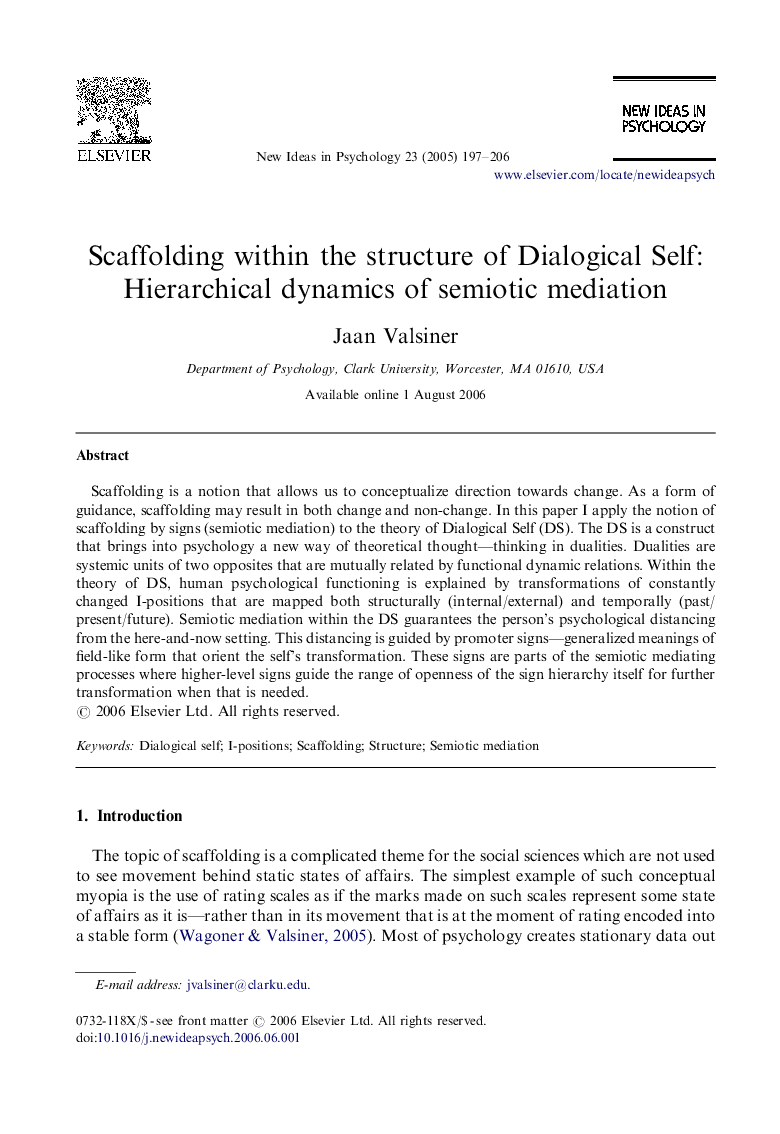| Article ID | Journal | Published Year | Pages | File Type |
|---|---|---|---|---|
| 10303356 | New Ideas in Psychology | 2005 | 10 Pages |
Abstract
Scaffolding is a notion that allows us to conceptualize direction towards change. As a form of guidance, scaffolding may result in both change and non-change. In this paper I apply the notion of scaffolding by signs (semiotic mediation) to the theory of Dialogical Self (DS). The DS is a construct that brings into psychology a new way of theoretical thought-thinking in dualities. Dualities are systemic units of two opposites that are mutually related by functional dynamic relations. Within the theory of DS, human psychological functioning is explained by transformations of constantly changed I-positions that are mapped both structurally (internal/external) and temporally (past/present/future). Semiotic mediation within the DS guarantees the person's psychological distancing from the here-and-now setting. This distancing is guided by promoter signs-generalized meanings of field-like form that orient the self's transformation. These signs are parts of the semiotic mediating processes where higher-level signs guide the range of openness of the sign hierarchy itself for further transformation when that is needed.
Related Topics
Social Sciences and Humanities
Psychology
Developmental and Educational Psychology
Authors
Jaan Valsiner,
